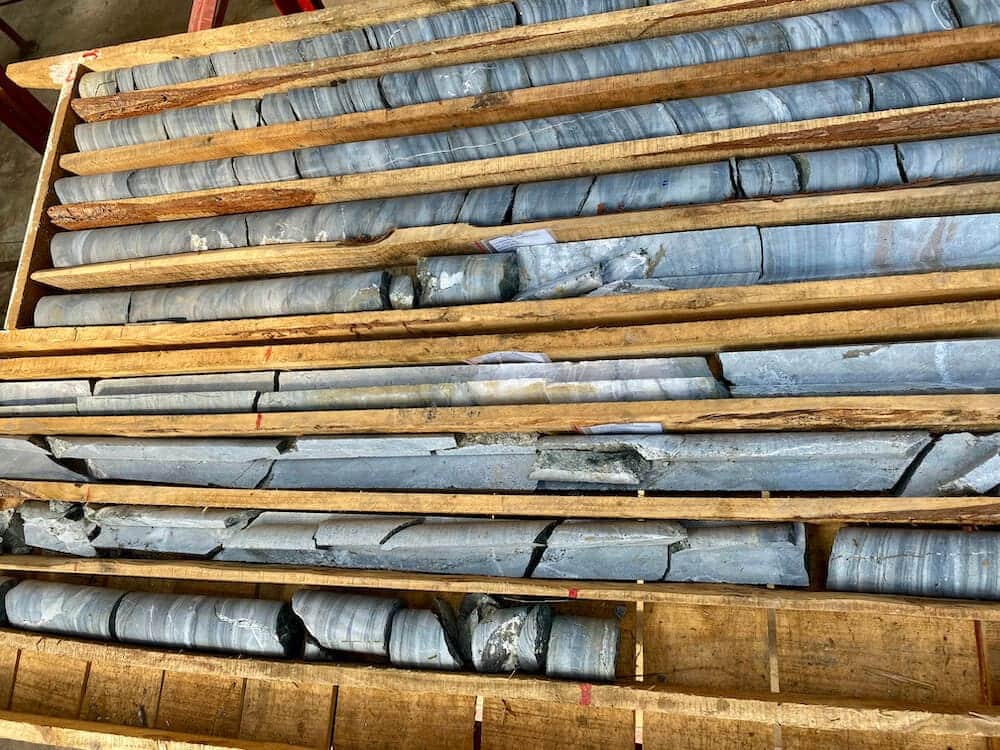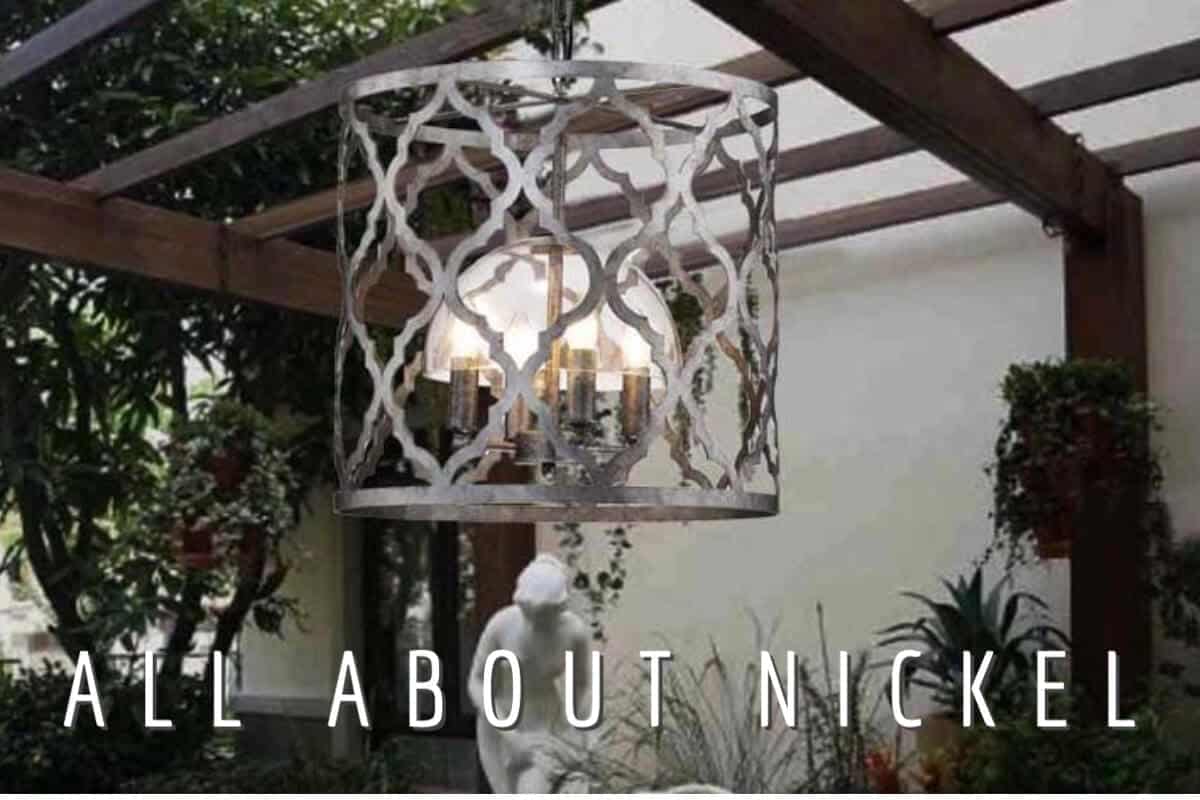As part of my charity work for Project Sprouts, we were guests at a Nickel Mine in Son La, Vietnam. The nickel mine is our partner in helping us to distribute charity goods to children and schools in this area. While I was at the mine, I saw some of the nickel they had brought out of the ground.
Nickel is a natural element as it is found in nature. It is a hard yet malleable and ductile metal with a shiny silver color with a slight gold tinge. Nickel is found mainly in Russia, South Africa, Canada, Australia, and some parts of China and Vietnam. For Home Decor manufacturing, Nickel is used for producing stainless steel. Since we use so much stainless steel in the home decor industry – for hardware, accessories, lamp and lighting parts, furniture, and other things – it is essential to understand the natural material of nickel.
Table of Contents
- Is Nickel A Natural Element?
- The Nickel (Natural Element) And Its Uses
- The Nickel (Natural Element) And Everyday Uses
- Nickel (Natural Element) Fun Facts
- 10 Ways the Nickel Finish Elevates Home Decor and Furniture
- Related Questions
Is Nickel A Natural Element?
Nickel is a natural element with the symbol Ni and the atomic or proton number 28. Nickel is a natural element, but it must be processed to be used in an end product like other natural elements.
Nickel is a silvery-white lustrous metal with a light gold cast to it. Nickel belongs to the transition metals and is also known to be hard and ductile.
Nickel is the 5th most abundant element on Earth, but it is 100 times more concentrated below the Earth’s crust than on the Earth’s crust. Nickel is thought to be the 2nd most abundant natural element in the earth’s inner core.
Nickel, as a natural element, is found and mined mainly in Australia, South Africa, Canada, and Russia. Recently, China has also started to produce nickel as they have such a huge need for stainless steel; China is making a lot of this nickel from laterite ore.
Over 30% of the world’s nickel is mined in the Sudbury Basin in Canada. You will notice that missing off the list of actively mining nickels is America; the United States is not listed as a major player in the nickel mining market.
Nickel is naturally found in two types of locations as follows:
- Laterite Deposit – Laterite deposits result from intensive weathering of the surface of nickel-rich rocks and magmatic sulfide deposits. This is where most nickel around the world is found.
- Deep-Sea Floor – The other place nickel is naturally found in the deep seafloor. Presently nickel is not mined from the ocean floor.

The Nickel (Natural Element) And Its Uses
Few products in the world are made of pure nickel; instead, nickel tends to play a more supportive role in many industries. Nickel is usually combined with other metals for the final product.
An example of this would be stainless steel, where nickel is the topcoat on top of the steel. Nickel is commonly used as a protective outer coating for other metals.
Nickel is used as a protective coating due to its ability to withstand extremely high temperatures. Nickel is known to be one of the superalloys because it is resistant to heat, corrosion, and oxidization – this means that it is an ideal metal to use on outdoor furniture, furniture legs, hardware, and other decorative elements.
But more than that, nickel is also used a lot for specialized military equipment, aerospace, and other industrial uses. It is also the natural element that is used in our batteries and electronics.
And, of course, nickel is one of the primary metals used for coins worldwide. The chances are that most countries in the world that use coins will have some coins that are plated with nickel.
In the United States, nickels, dimes, quarters, and half-dollar coins are all copper-nickel alloys. In fact, for the US currency, the US nickel coin contains almost 25% nickel, whereas the other coins as a dime, quarter, or half a dollar, only have about 8% nickel.
The Nickel (Natural Element) And Everyday Uses
You might wonder why is the natural element of nickel essential or why we should worry about nickel. One of the most exciting things is that nickel is being used a lot in batteries.
When I recently went to the nickel mine site in Vietnam, I discovered that many of the nickel they are mining would stay within Vietnam and be used in batteries for things such as electric cars and motorcycles.
This means that getting the nickel for the batteries will be very important for the new wave of battery-operated vehicles. The ability to mine the nickel to produce the batteries will become an essential part of this industry.
It also means that as we use a lot of nickel in the home decor and home furnishing industry, if there is a shortage of nickel, it will drive up the prices for things like stainless steel or some other hardware. This is why it is important when designing products for home decor and furniture that we also understand the cost of nickel and why it fluctuates.
Nickel (Natural Element) Fun Facts
Here are some fun facts you maybe did not know about the natural element of nickel:
- Nickle is found in things you use almost every day, like electronics and batteries.
- A nickel allergy is one of the most common causes of allergic reactions to metal; a common cause is jewelry that contains nickel, such as white gold.
- Can make 300 kilometers (186 miles) of a skinny wire from 1 kilogram (about 2 pounds) of nickel.
- Switzerland produced the first coin of pure nickel in 1981.
- Canada, the world’s largest nickel producer, also had a 99.9% nickel coin worth five cents between 1920 to 1981.
- Adding nickel to glass, depending on the concentration, produces blue, violet, or even black glass.
- Using nickel on a table leg or hardware will not rust or erode.
- Nickle is found in trace amounts naturally in most vegetables, fruits, nuts, chocolate, and wine. It is considered an essential natural element for healthy plant life.
- If you eat or ingest too much nickel, it is harmful to human health and can cause nickel toxicity.
- People who constantly breathe traces of nickel dust are at an increased risk for lung cancer, fibrosis, and other ailments.
If you want to learn more about nickel or nickel home decor and home furnishing products, we would love to talk to you.
10 Ways the Nickel Finish Elevates Home Decor and Furniture
Nickel finish, with its subtle shine and timeless appeal, has made a significant mark in the world of home decor and furniture. The charm of nickel lies in its versatility – it can blend seamlessly with a variety of design aesthetics, from vintage to contemporary.
Let’s explore ten ways this finish is employed to enhance the beauty of homes:
Lamp Parts:
Nickel-finished lamp bases stands, and fixtures add a touch of understated luxury to a room. The reflective properties of nickel enhance the lamp’s glow, creating a warm and inviting ambiance.
Hardware:
Think of door handles, cabinet pulls, and drawer knobs. A nickel finish on these hardware pieces adds a consistent, polished look throughout a home. Its resistance to tarnish also makes it a practical choice for frequently touched surfaces.
Tables:
Coffee, side, and dining tables with nickel-finished legs or frames offer a sleek and modern touch. The shiny surface contrasts beautifully with wooden or glass tabletops, creating a balance between the elements.
Accessories:
In a nickel finish, decorative items like trays, bowls, vases, and picture frames can serve as statement pieces in a room. They catch and reflect light, adding visual interest and depth to their surroundings.
Mirrors:
Frames with a nickel finish can transform mirrors into pieces of art. The nickel border enhances the mirror’s aesthetic appeal, whether it’s a bathroom vanity mirror or a decorative wall mirror in the living room.
Chairs and Stools:
Nickel-finished legs on chairs or bar stools bring in a touch of modern elegance. Paired with plush upholstery, the metal’s cool tones offer a striking contrast.
Bathroom Fixtures:
Faucets, showerheads, towel racks, and other bathroom fixtures in a nickel finish look sophisticated and resist moisture-induced damage, ensuring longevity.
Ceiling Fans and Fixtures:
The arms, blades, or even the entire body of ceiling fans with a nickel finish can complement a room’s overall design. Similarly, chandeliers and pendant lights with nickel accents can become the room’s focal point.
Bed Frames:
A bed frame with nickel-finished posts or detailing adds a touch of glam to bedrooms. The finish pairs well with a variety of bedding colors and styles, ensuring the bed remains the room’s centerpiece.
Shelving Units:
Whether wall-mounted or freestanding, shelves with nickel supports or brackets can uplift the design quotient of a room, they can seamlessly blend with various materials like wood or glass, making them versatile for different room themes.
With its blend of shine and durability, the nickel finish offers a timeless solution to elevate home decor and furniture pieces. Its adaptability to various styles ensures that nickel-finished items remain evergreen, adding a touch of class to homes for years to come.
Find out more about how Mondoro can help you create, develop, and manufacture excellent home decor and furniture products – don’t hesitate to contact me, Anita. Check out my email by clicking here or become a part of our community and join our newsletter by clicking here.
Mondoro gives out a FREE Lookbook to anyone interested. You can receive a copy of our latest Lookbook by clicking here.
Listen to our Podcast called Global Trade Gal. You can find it on all major podcast platforms. Try out listening to one of our podcasts by clicking here.
Subscribe to our Mondoro Company Limited YouTube Channel with great videos and information by clicking here.
Related Questions
What Is The Difference Between LED, CFL, and Incandescent Light Bulbs?
Incandescent Light Bulb is the light bulb that most of us call a standard lightbulb or the lightbulb Edison invented. CFL is also known as a Compact Fluorescent lightbulb, and as the name implies, a compact bulb fluorescent light bulb. LED is a light bulb that uses light-emitting diodes.
You can learn more by reading What Is The Difference Between LED, CFL, and Incandescent Light Bulbs? by clicking here.
What is the Standard Light Bulb Base?
The standard light bulb base is E-26. The E-26 light bulb base must use an E-26 socket; you will find an E-26 socket on many tables and floor lamps sold in the United States. The E-26 socket is also known as the standard socket. Besides the E-26 lamp holder socket, the other significant U.S. lamp holder socket types are E-12, E-19, and E-39.
You can learn more by reading What is the Standard Light Bulb Base? Different E -Socket Types by clicking here.

